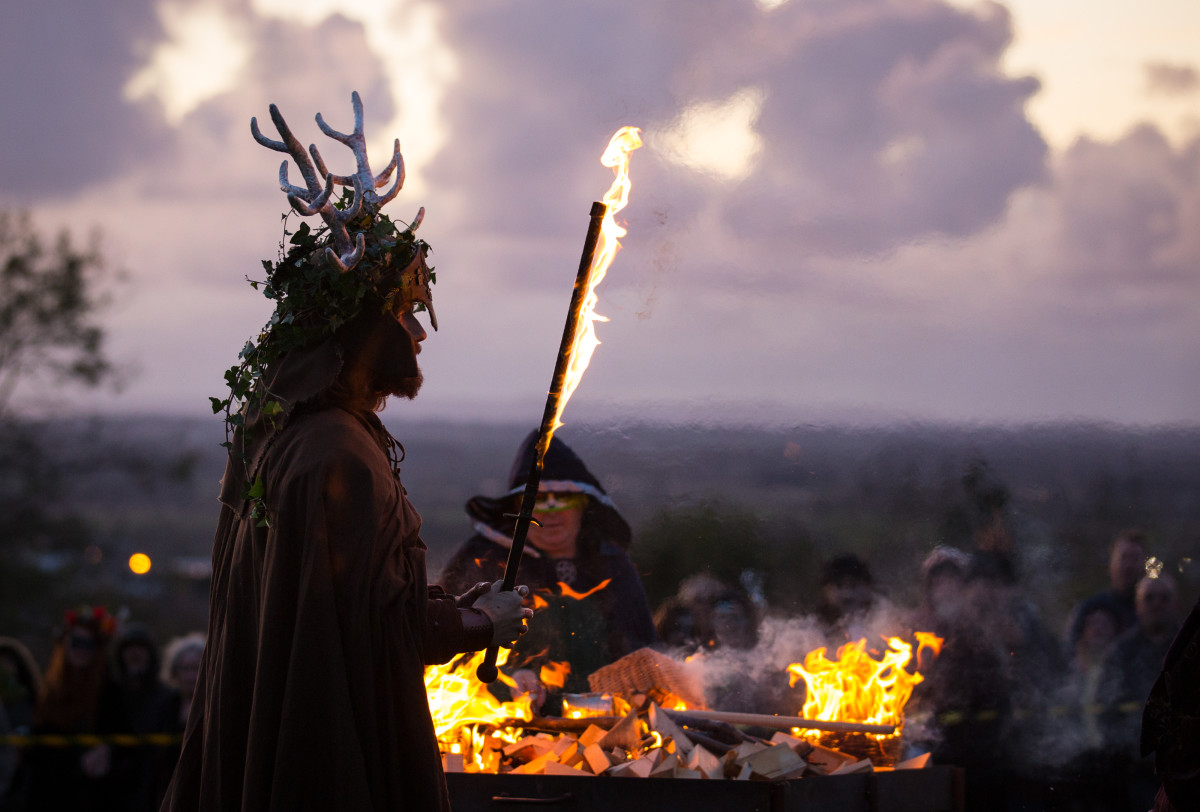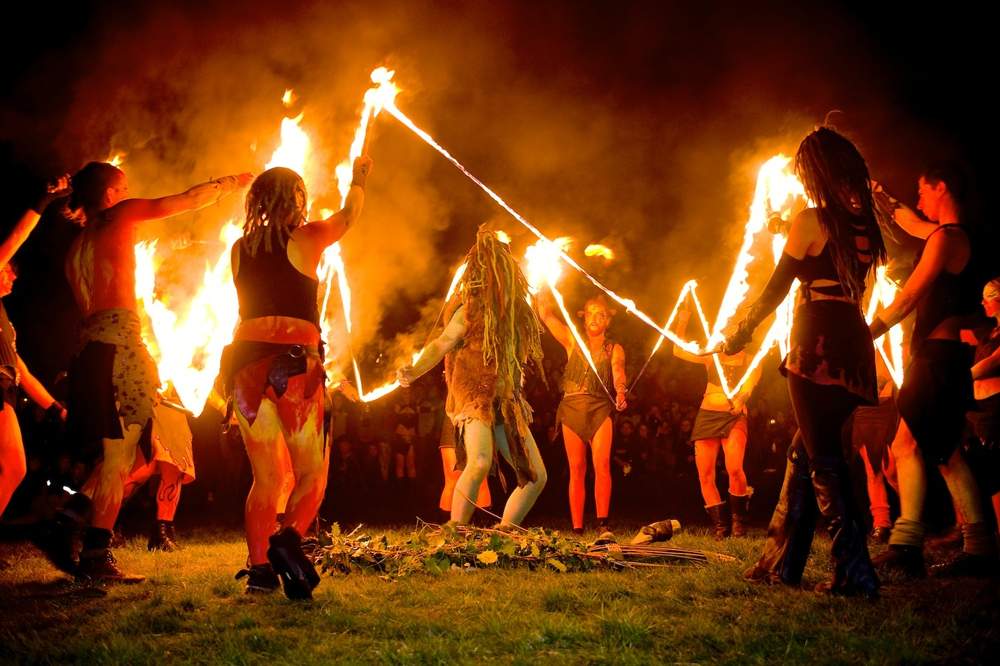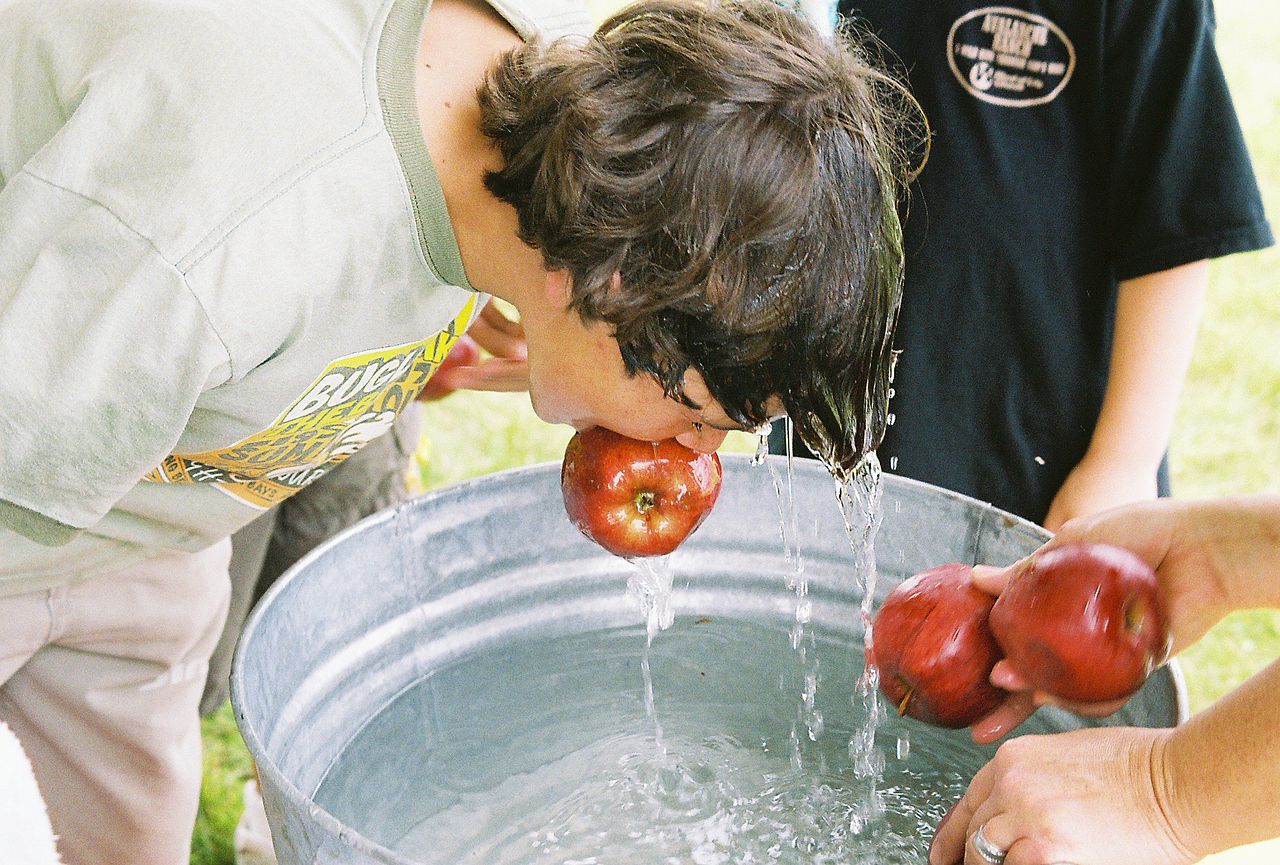One of BraeVal's favorite months is October because it is when the autumn air is crisp and cool, and the trees are mantled in the fire colors of autumn's splendor. The cold winter months are just around the corner, the days grow shorter and the nights well, they are perfect for a wee dram and a story about Hallowe'en and how it all began. Even the name itself, Hallowe'en comes from a Scottish shortening of All Hallow's Eve. So put on your favorite BraeVal shirt have a wee dram or two ... and read our Hallowe'en story.....

Today's spooktacular candy fest known as Halloween was born out of a Celtic festival whose roots run deep in Scotland. In a way, this should be no surprise when thinking about Scotland's storied history of intrigues and murders, betrayals and loyalty, love and honor. And, then there is the landscape --- shaped by nature herself - heather-strewn misty moors, rugged cliffs, windswept beaches, deep blue lochs, and an undulating landscape where sunny spells and dark shadows move -- revealing hills at one moment and obscuring them at the next! It is so easy to imagine witches and ghosts, goblins, and ghouls...and the Loch Nest Monster of course!

Halloween is said to have come from "All Hallows Eve," a historic Christian celebration celebrating All Saints Day, but that is not the end of the story! Actually, Halloween has its origins in a Celtic pagan harvest festival originating in Scotland known as Samhain or Samhuinn in Scottish Gaelic. This ancient Scottish celebration symbolized the end of the summer and the oncoming of winter as well as marking the harvest and making preparations for the dark nights of winter. Hallowe'en was serious business and was celebrated to ensure good crops and protect people from evil.
The most important belief of Samhain and its connection to Halloween, as we know it is the belief that the door to the spirit world is open and the dead can walk among the living once again. An ancient Scottish tradition was to leave an empty chair and plate of food for the souls of their ancestors. Fire played an important part in Samhain ceremonies. In some villages, two bonfires were lit for people and animals to walk between in a sacred purifying ritual. Afterward, hearth fires were doused with water and re-lit from the communal bonfire for good luck. Other villages lit torches and carried them around their homes and fields for protection. Samhain wasn't all ritual, as documentation shows that as early as the 1700's it was also known as "mischief night," because of the pranks that were played.

Love of community is very important in Scotland and is part of their cultural heritage. A perfect example of this was the communal feasts that took place during Samhain. A highlight of every feast was fuarag, Scotland's delicious and mysterious Hallowe'en cake. The cake is usually a big face with sweet icing and cheeks filled with creme. When the cake was cut open, it revealed three trinkets, a ring, a coin, and a button. The person who got the ring would be wed, the person who got the coin would see riches, and the person who got the button would never marry!
Today we think of trick-or-treating as an American invention. Actually, this notion originated in Scotland where it is called guising, a shortened form of the word disguise. Wearing a disguise, Scottish children go door to door saying trick or treat for sweets. In return for their treat, children would sing a song, recite a poem, or tell a joke. In ancient Scotland, costumes were much creepier than most are today. To the ancient Celts, Hallowe'en was an important ritual that lasted for several days and it was important to disguise themselves as harmful spirits to avoid them.

Carved Jack-o-lanterns can also be traced back to Scotland only they were carved from turnips, not pumpkins. In a Scottish folklore tale, a man called Jack o"Lantern was a ghostly figure of the night who roamed the land with a burning lump of coal inside a hollow turnip. During Samhain, people would carve out turnips to create their own lanterns to keep evil away.

An old-fashioned Halloween tradition, bobbing for apples also has its' roots in Scotland where they call it "dookin" for apples. Ancient Celts believed that heaven would be full of apple trees, fruits, and flowers. In the past, apples were considered an important element in mystical Celtic ceremonies and fortune-telling. For example, the first unmarried person to bite into an apple when "dookin" would be the first to marry. Another tool used in prediction was Kale or Cabbage pulling. The shape and size of the stake pulled from the ground on Halloween night was said to represent your future lover's height, and figure, and the amount of soil around the roots represented wealth.
No matter how commercial Halloween seems to be, in its original form, it was not about expensive costumes and parties, it was an ancient Celtic ritual that has been celebrated in Scotland for centuries and has become a beloved tradition around the world.


